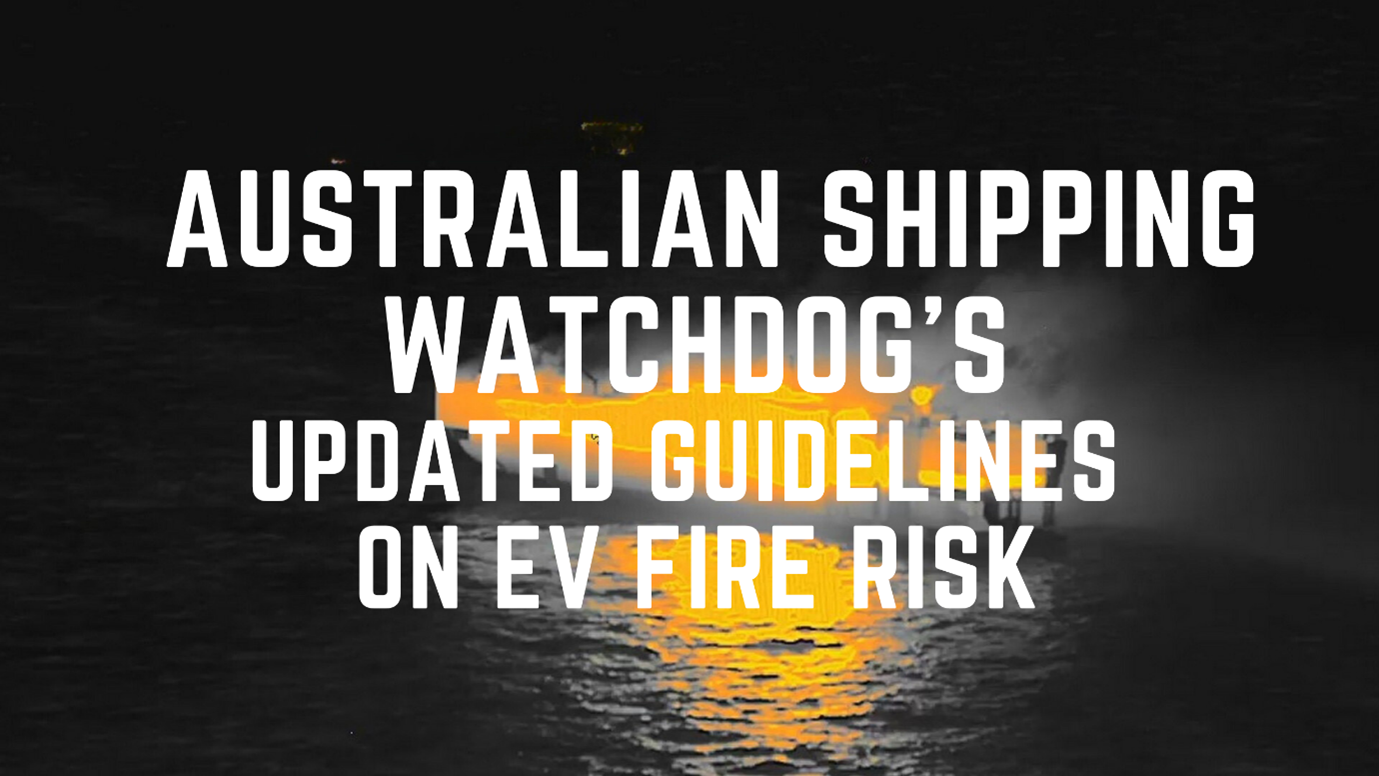AMSA's 'Safet Alert' on the Dangers of EVs

The Australian Maritime Safety Authority (AMSA) has updated its DCV Safety Alert 02/2023 to include “New Risks Associated with the Carriage of Battery Electric Vehicles”.
These ‘New Risks’ include: voltage shocks, direct jet flames, fires of extreme intensity, toxic gases, gas explosion, long-lasting reignition risk and that, once established, these fires are difficult to stop and subject to “thermal runaway”.
AMSA lists 12 key recommendations for vessel operators, ranging from how EVs should not be charged onboard to EVs needing to be stowed separately away from other cars, machinery, emergency equipment, dangerous goods and passengers.
According to AMSA:
“The presence of EVs onboard the vessel, should be known to the master and crew. Prior to loading, EVs should be clearly identified with a marking system that the master and all the crew are familiar with”.
The EVs’ designated location should allow for easy evacuation of the vessel, while ensuring ‘ease of access’ to onshore fire and emergency services.
Because EVs are closer to the ground and 25 percent heavier than conventional vehicles, they are more susceptible to battery damage when loading or unloading via ramp.
“Care should be taken in identifying these vehicles before boarding to ensure damage is not sustained to the battery”, which “can create rapid heating of the battery cells, leading to thermal runaways”.
Then there’s this:
“The master should manoeuvre the vessel to control the flow of smoke and gases from the BEV fire away from passengers and crew. The smoke and gases are both toxic and potentially flammable.”
Blimey!
How many of Australia’s privately owned car ferries will be able to implement all this – either logistically or financially? Not many.
Maybe EV owners should be charged a premium for transporting their potential fire traps by boat?
No doubt the recent fires on cargo ships like the Felicity Ace and the Freemantle Highway, were uppermost in AMSA’s mind when revising their guidelines.
And who knows what other incidents AMSA may be aware of, that the public is not privy to.
In the case of the Freemantle Highway, we know that one crew member was tragically killed, and several others injured. Ultimately, the whole crew were forced to jump into the ocean to avoid the unstoppable blaze.
As the number of EVs grows, so to do the risks they pose to shipping and the lives of those onboard.
Sadly, it will probably take some horrific tragedy involving passengers, before governments and regulators are prepared to take any action.
No responses yet